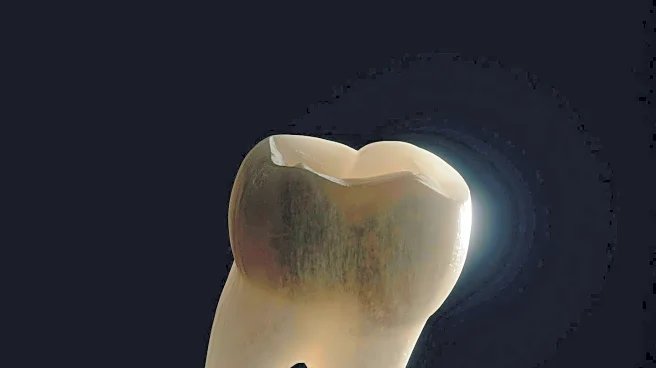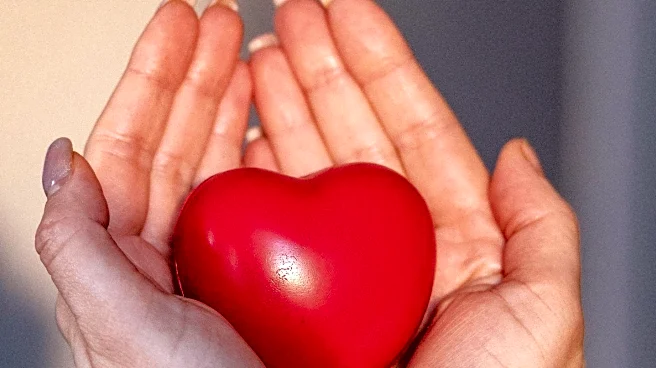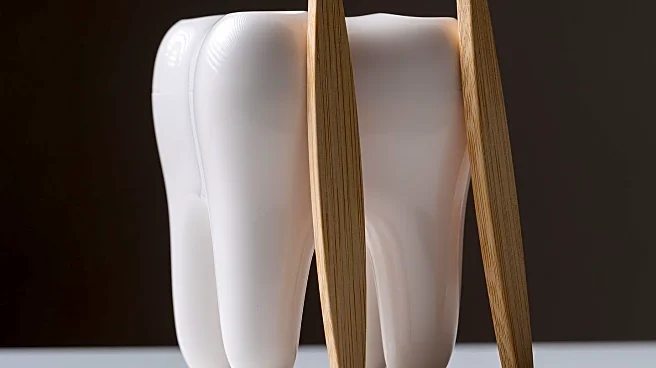What's Happening?
Sleep bruxism, characterized by involuntary jaw-muscle activity such as grinding and clenching during sleep, is a condition affecting approximately 8% of adults and is more prevalent among children and adolescents. Dr. Hosam Alraqiq from the National Institute of Dental and Craniofacial Research highlights the potential damage to teeth caused by this condition. Factors contributing to sleep bruxism include genetic predisposition, stress, anxiety, and certain medical conditions like sleep apnea and Parkinson's disease. Dr. Michelle Drerup from the Cleveland Clinic notes that bruxism can lead to significant dental issues, including tooth enamel damage and increased sensitivity. Management strategies include maintaining good sleep hygiene, relaxation techniques, and cognitive behavioral therapy.
Why It's Important?
Sleep bruxism can have serious implications for dental health, potentially leading to conditions such as temporomandibular joint disorder, which causes jaw and facial pain. The condition can also disrupt sleep quality, resulting in fatigue. Addressing sleep bruxism is crucial for preventing long-term dental damage and improving overall sleep health. Healthcare providers may recommend interventions like custom nightguards or botulinum toxin injections to alleviate symptoms. Understanding and managing sleep bruxism is essential for individuals experiencing related symptoms and for healthcare professionals aiming to provide effective treatment.
What's Next?
Further research into the genetic and environmental factors contributing to sleep bruxism could lead to more targeted treatments. Healthcare providers may continue to explore innovative therapies and interventions to manage the condition effectively. Increased awareness and education about sleep bruxism can help individuals recognize symptoms early and seek appropriate care. Collaboration between dental and medical professionals may enhance treatment strategies and improve patient outcomes.
Beyond the Headlines
The cultural and psychological aspects of sleep bruxism, such as its link to stress and anxiety, highlight the importance of addressing mental health in conjunction with physical symptoms. The condition's prevalence among children and adolescents suggests a need for early intervention and education to prevent long-term dental issues. Exploring the genetic basis of sleep bruxism could provide insights into personalized treatment approaches.










